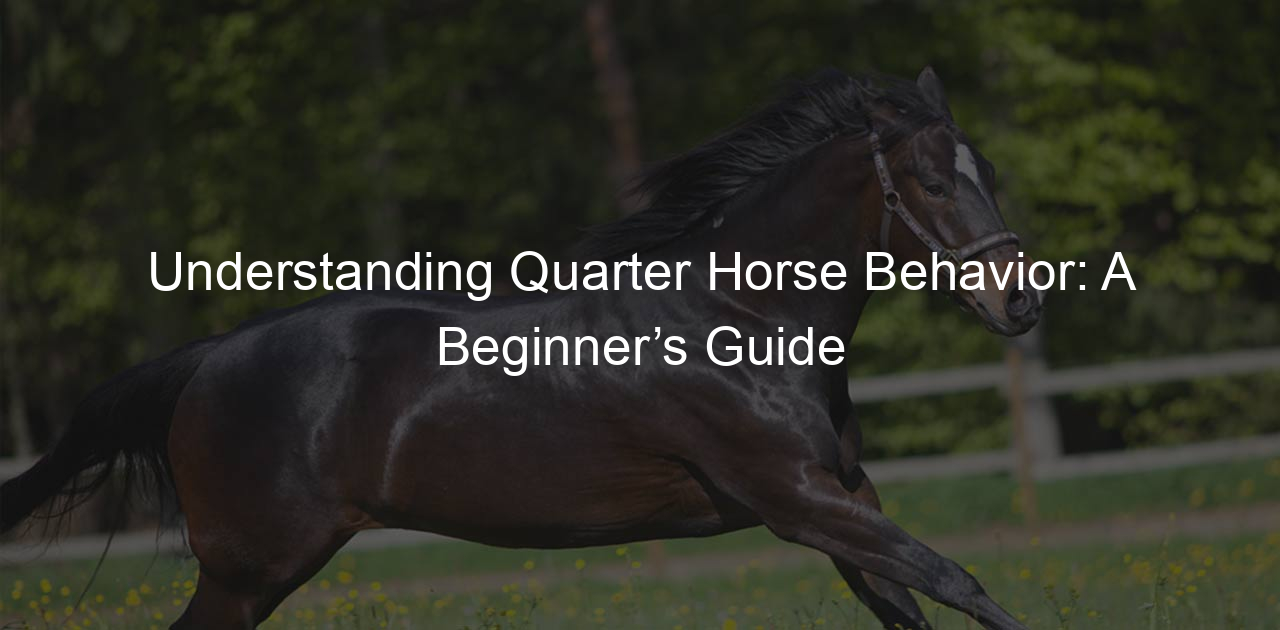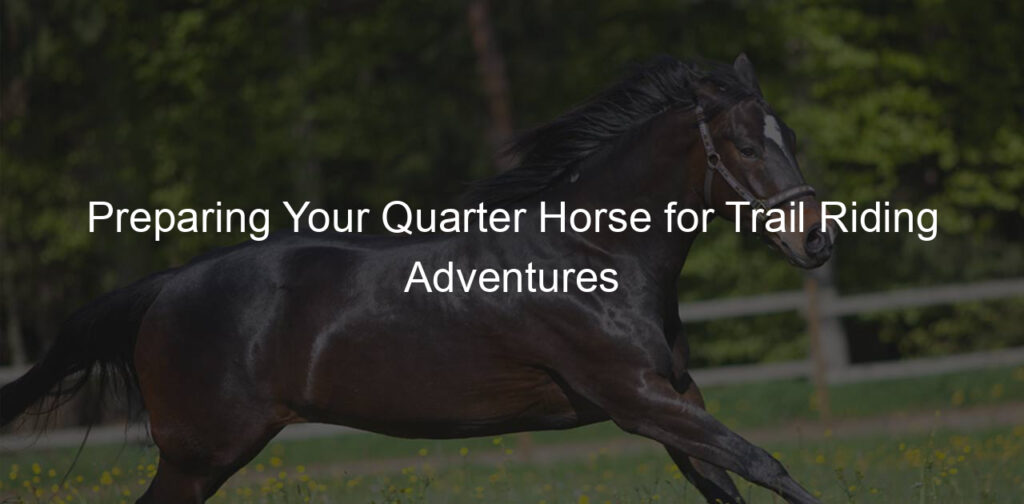
Introduction to Quarter Horse Weaning
- Understanding the importance of weaning Quarter Horse foals: Weaning is a crucial step in a Quarter Horse foal’s life. It helps them grow independent and strong. During weaning, foals learn to eat solid food and live without their mother’s milk. This process is essential for their health and development.
- Overview of the weaning process for Quarter Horses: The weaning process usually starts when the foal is around 4 to 6 months old. It involves gradually separating the foal from its mother. This can be done by placing them in separate but nearby pens. The foal will slowly get used to being on its own, which reduces stress. Proper weaning ensures the foal grows into a healthy adult horse.
Best Practices for Quarter Horse Weaning
Preparation for Weaning
Weaning is a crucial step in a Quarter Horse foal’s life. Proper preparation can make this process smoother for both the mare and the foal. Here are some best practices to follow:
- Assessing Quarter Horse weaning age: Most Quarter Horse foals are weaned between 4 to 6 months of age. This age range is ideal because the foal has developed enough to eat solid food and is less dependent on the mare’s milk. According to Wikipedia, weaning at this age helps reduce stress.
- Preparing the mare and foal for weaning: Gradually separate the mare and foal for short periods before full weaning. This helps them get used to being apart. Ensure the foal is comfortable eating solid food and drinking water. Check the mare’s health and reduce her milk production gradually to avoid discomfort.
- Creating a Quarter Horse weaning schedule: Develop a weaning schedule that includes gradual separation times and monitoring of the foal’s health. A typical schedule might start with short separations of 1-2 hours, gradually increasing over a few weeks. Keep a close eye on both the mare and foal during this period to ensure they are adjusting well.
| Weaning Step | Recommended Action |
|---|---|
| Assessing Age | Wean at 4-6 months |
| Preparing Mare and Foal | Gradual separation, ensure solid food intake |
| Creating Schedule | Start with 1-2 hour separations, increase gradually |
Weaning Methods
-
Traditional weaning methods for Quarter Horses
Involve separating the foal from the mare abruptly. This method is quick but can be stressful for both the mare and the foal. Typically, the foal is moved to a different location, away from the mare. This sudden change can cause anxiety and stress.
One common traditional method is “cold turkey” weaning. In this method, the foal is taken away from the mare without any gradual separation. While effective, it requires careful monitoring to ensure the foal adapts well.
-
Modern weaning strategies for Quarter Horses
Focus on reducing stress for the foal and mare. One popular method is gradual weaning. This involves slowly increasing the time the foal spends away from the mare. Over days or weeks, the foal gets used to being independent.
Another modern strategy is fence-line weaning. In this method, the mare and foal are placed in adjacent pens. They can see and touch each other but cannot nurse. This reduces stress because they still have visual and physical contact.
Studies have shown that gradual and fence-line weaning can lower stress levels in foals. This leads to healthier and happier horses.
-
Case Study: Successful Quarter Horse weaning methods
At Sunny Acres Farm, a combination of gradual and fence-line weaning was used. The foals were first separated from their mares for short periods each day. Over two weeks, the separation time increased.
Next, the foals were moved to pens next to their mares. They could see and touch but not nurse. This method helped the foals adjust smoothly. The farm reported lower stress levels and healthier foals.
Sunny Acres Farm’s success shows that combining modern weaning methods can be very effective. Their approach can serve as a model for other Quarter Horse breeders.
Managing Weaning Stress
- Identifying signs of stress in Quarter Horse foalsWeaning can be a stressful time for Quarter Horse foals. It’s important to watch for signs of stress, such as:
- Loss of appetite
- Excessive vocalization
- Restlessness or pacing
- Weight loss
- Diarrhea
Recognizing these signs early can help you take steps to reduce stress.
- Techniques for managing Quarter Horse weaning stressThere are several techniques to help manage weaning stress in Quarter Horse foals:
- Gradual Weaning: Slowly separate the mare and foal over time to reduce stress.
- Companionship: Keep foals with other weanlings or a calm older horse for comfort.
- Nutrition: Ensure the foal has a balanced diet to support its health during weaning.
- Environment: Provide a safe and familiar environment to minimize anxiety.
These techniques can help make the weaning process smoother for both the foal and the mare.
- Key Takeaway: Importance of stress management during weaningManaging stress during weaning is crucial for the health and well-being of Quarter Horse foals. Proper techniques and early identification of stress signs can lead to a successful weaning process. A less stressed foal is more likely to grow into a healthy and happy adult horse.
Quarter Horse Foal Care During Weaning
Nutrition
- Understanding Quarter Horse foal nutrition needsQuarter Horse foals need a balanced diet to grow strong and healthy. They require proteins, vitamins, and minerals. A good diet helps them develop muscles and bones.
- Feeding strategies during the weaning processWeaning is a crucial time for foals. Gradually introduce solid food while reducing milk. This helps them adjust without stress. Provide clean water and fresh hay daily.
- Example: Effective diet plan for weaning Quarter Horse foalsHere is a sample diet plan:
Age (Months) Feed Type Quantity 4-5 Milk Replacer 2-4 liters/day 5-6 Foal Starter Feed 0.5-1 kg/day 6-7 Foal Grower Feed 1-2 kg/day 7+ Hay and Pasture Free Access Adjust the diet based on the foal’s growth and health. Always consult a vet for personalized advice.
Health Monitoring
- Regular health checks during weaning:
These checks help to catch any potential health issues early. A vet should examine the foal’s weight, temperature, and overall health. Regular checks ensure the foal is growing well and staying healthy. - Common health issues in weaning Quarter Horse foals:
Some common problems include digestive issues, respiratory infections, and stress-related illnesses. It’s crucial to monitor for signs like coughing, diarrhea, or loss of appetite. Early detection and treatment can prevent serious health problems. - Key Takeaway: Importance of health monitoring during weaning:
Health monitoring is vital during the weaning process. Regular checks help ensure the foal’s well-being and catch any issues early. By keeping a close eye on their health, you can ensure a smoother weaning process and a healthier foal.
Conclusion: Ensuring a Successful Weaning Process
- Recap of best practices for weaning Quarter Horse foals: Weaning is a crucial stage in a Quarter Horse foal’s life. It is important to follow best practices such as gradual separation, providing a balanced diet, and ensuring a safe environment. These steps help minimize stress and promote healthy growth.
- The role of patience and consistency in weaning: Patience and consistency are key to a smooth weaning process. Foals need time to adjust to changes. Consistent routines help them feel secure. Gradual weaning over several weeks is often more successful than abrupt separation.
- Final thoughts on Quarter Horse weaning tips: Weaning can be challenging, but with the right approach, it can be a positive experience for both the foal and the mare. Monitor the foal’s health closely and provide plenty of fresh water and quality feed. Seeking advice from experienced horse breeders or veterinarians can also be very helpful.
| Best Practices | Importance |
|---|---|
| Gradual Separation | Reduces stress for foal and mare |
| Balanced Diet | Ensures proper nutrition and growth |
| Safe Environment | Prevents injuries and promotes well-being |
| Consistent Routines | Helps foal adapt to changes |
Weaning Quarter Horse foals requires careful planning and execution. By following best practices and being patient and consistent, you can ensure a smooth transition for your foal. Always prioritize the health and well-being of your foal during this important stage.









